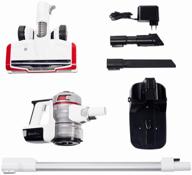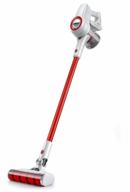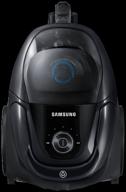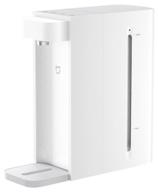
Review on 🌪️ Oneida Molded Dust Deputy Cyclone: Maximum Particle Separation and Dust Collection Efficiency by Roberto Manzer

overview and guidance.
Now I know everyone loves these Oneida Dust Vice cyclones and the truth is this is a good product that doesn't require a rocket scientist to set up and operate. That being said, the reason I gave it 3 stars is for several reasons I can't get around. First, it's the price. The thing is just too expensive for what it is. A molded piece of plastic for $58 is too expensive. The second reason I gave it 3 stars is the base. The flange at the base of the cyclone is too small and flimsy. It's a serious burden when you mount this thing on a bucket. The flange is by far the weakest point of this product and after a while it gets pulled with a hose. I'm sure it will start to fail. The base must be 2 mm thicker and have a larger diameter. Best attached with six 1/4" x 1-1/2" screws to a piece of 1/2" plywood. Even with three stars I still think the product is great and would recommend it to anyone who sucks up fine dust particles, similar to sawdust which tends to clog vacuum cleaners the base i built for the vacuum cleaner and cyclone then all i need to do is install the cyclone bucket into the bucket which attaches to the base for a secure hold and easy Use a compass to mark and cut out a circle about 7-1/2" in diameter on a piece of wood board. The base is just over 5" in diameter, giving you enough room to fit the cyclone to guide, and enough surface area on the bucket lid to spread some of the tension created by pulling the vacuum hose in. Use the same center point you used to cut the 7-1/2 diameter circle customs, etc nd mark a circle 3 inches in diameter. In a 3 inch diameter circle, drill a hole large enough for the jigsaw blade to fit through. Then cut out a 3 inch circle. The hole in the base of the cyclone is approximately 3-1/8 inches in diameter. A 3" hole is big enough, but if you want to cut a 3-1/8" hole, there's no harm. Oh, and while you've already set your compass to 3″, you could also mark a 3″ hole in the top of the bucket and cut it out. Take your cyclone and place it on top of the plywood you just cut and line up the hole. as close as possible. Mark each hole as close to the center of the hole as possible. It doesn't have to be exactly centered. Remove the cyclone, take a circle of plywood and place it on top of the bucket lid and line the hole as best you can. Use a couple of bar clamps to hold the wooden circle against the lid so it doesn't move while you drill the holes. Use a 1/4" or 3/8" drill bit. Simultaneously drill six holes in the plywood circle and lid. Then remove the plywood from the cover. Now you are ready for assembly. You can use regular old caulk to get a good seal. Squeeze a bead of sealant onto the base of the cyclone and try to fit it into the bolt holes. There is no need to save on putty. You can delete the excess later. Then place the base on the plywood circle and line up the screw holes. Place a washer on each bolt and insert each bolt into the holes in the cyclone base and plywood. Then on the lid of the bucket. Extrude a nice line of sealant around the hole in the cap. Keep it as close to the hole as possible. Again, you don't have to do without hunting. Place the plywood cyclone on the lid and thread all the screws through each hole in the lid. on the underside of the lid. Place a washer on each bolt and nut. Hand tighten the nut. Then take a wrench and tighten each nut securely. All the excess sealant will be squeezed out, but don't worry. Just use your finger and wipe away any excess caulk, or if you're one of those girly guys who doesn't like getting their hands dirty. Use a damp cloth. Now cover the bucket with a lid and you're done. You don't have to wait for the sealer to dry to use it. I know it sounds like a lot, but it only took me about half an hour to install. Now some are probably talking. Well, who asked this genius for directions? Well, nobody asked. I was bored with the extra time I had and decided to give direction to those who were less inclined. I remember when I started DIY before you could connect to the internet and find all the help you need on the internet for free. I wish I had someone to help me with some things because I thought it would be an easy DIY mole. For some beginners who are less inclined. It can look like a mountain.
- Consistent test results
- A newer model could have been chosen












